Soft Yeast Rolls Made with Fresh Milled Flour
These fresh milled flour yeast rolls exemplify midwestern comfort food. There’s nothing like a soft, fluffy warm yeast roll fresh out of the oven.
This recipe makes 24 rolls so it’s perfect for a large family gathering. However, if you don’t need all 24 rolls you have several options:
1.) Any extra rolls freeze very well.
2.) You can prepare the dough all the way through the shaping step. Then, freeze the dough balls. When you’re ready to bake, remove the exact number of dough balls that you need from the freezer. Bring them to room temperature for the second rise until doubled in size. This usually take 3-5 hours. Then, bake per the instructions below.
3.) This is the same recipe as my soft sandwich bread. It is an extremely versatile recipe. You may cut the dough in half and shape into 12 rolls. Then, take the other half and shape into a soft sandwich loaf. Stay tuned, I use this recipe in countless ways. There will be more posts on what you can do with the second half of this dough to mix up the flavors.
As mentioned above, this recipe is the same as my soft sandwich bread. Check out my in-depth step-by-step guide and all the tips and tricks in my soft sandwich bread post.
*This post contains affiliate links. Please see full disclosure for details.
Ingredients for yeast rolls made with fresh milled Flour:
660 g hard white wheat berries (or 473 g hard white and 187 g Khorasan)
26 g dry milk powder (1/4 cup) (May omit milk powder and substitute water for milk.)
11.5 g salt (2 tsp)
85 g honey
39 g olive oil (May substitute butter that has been melted and cooled to room temperature.)
418 g water
1 egg (room temperature)
2 1/2 tsp instant yeast
3 tsp butter (for greasing pans and topping rolls)
Step 1. Mixing:
First, you will want to measure 660 grams of wheat berries. I like to use 473 grams of hard white and 187 grams of Khorasan. If you don’t have Khorasan, you can use all hard white. Hard red wheat berries are another great option.
Next, you will mill the wheat berries through your grain mill on a fine setting. I have a NutriMill Harvest so I can get a full 660 grams of flour one-for-one out of my grain mill. If you have trouble getting all the flour to move through your mill, you may need to weigh out one or two grams extra of wheat berries. This will account for any loss you may experience in the milling process. Once you have the flour freshly milled, add 11.5 grams (2 tsp) of salt and 26 grams (¼ cup) of dry milk powder to the flour and gently mix with a spoon. Then set aside.
Tip:
If you don’t have milk powder, you may omit it, but you will need to substitute the water for milk.
After that, measure 418 grams of water and warm until it’s approximately 95° F to 105°F. This can be done by placing it in the microwave for approximately 45 seconds. Add water, 39 grams of olive oil, 85 grams of honey, and 1 room temperature egg to a stand mixer. Mix the liquid ingredients. Start out at a low speed and then slowly increase the speed to medium until all the wet ingredients are well mixed.
Once the wet ingredients are mixed, gradually add the freshly milled flour mixture. Mix on a low to medium speed just until all the flour is no longer dry. It should only take one to two minutes. Don’t over mix at this point. You’re just trying to get the flour wet at this stage.
Step 2. Autolysing:
Next, cover and let rest for 1 hour. This rest period is called Autolysing. It is a critical step to successfully baking with fresh milled flour. Autolysing is a rest period that allows the flour to fully absorb the liquid. It also plays a role in better gluten development. This is especially important with fresh milled flour as it gives the wheat germ and bran the opportunity to soften up. Skipping this step will result in a more dense and crumbly loaf.
Step 3. Kneading:
After the dough has autolysed for one hour, add 2 1/2 tsp instant yeast. I like to use saf–instant. Then, knead in your stand mixer until you have reached a windowpane. Trust the process and DO NOT add any extra flour at this point. When you first start mixing this is a very wet dough. It will come together. As you start to knead you will see the dough strengthen. It will begin to ball up and become one cohesive unit. The kneading process will be done when you reach the windowpane stage.
Windowpane is determined by pulling a piece of the dough upward. Then, stretch until it becomes very thin and translucent before it breaks. Depending on your mixer, reaching a windowpane can take anywhere between 5-30 minutes. If you are new to making bread, I highly recommend watching it closely. Subsequently, over kneading can cause the dough to break down and lose the gluten structure. The result of the bread will be tough and chewy. Stop the mixer frequently to test for a windowpane. Once you become more experienced you will know about how long it takes your mixer so you can walk away while your stand mixer does all the work.
I have an Ankarsrum mixer that does a very gentle and slow knead. It takes me about 24 minutes to reach the windowpane. I also have a Bosch Universal Plus stand mixer. It takes 6-8 minutes to reach a windowpane. A Kitchen Aid will vary based on the specific model you have.
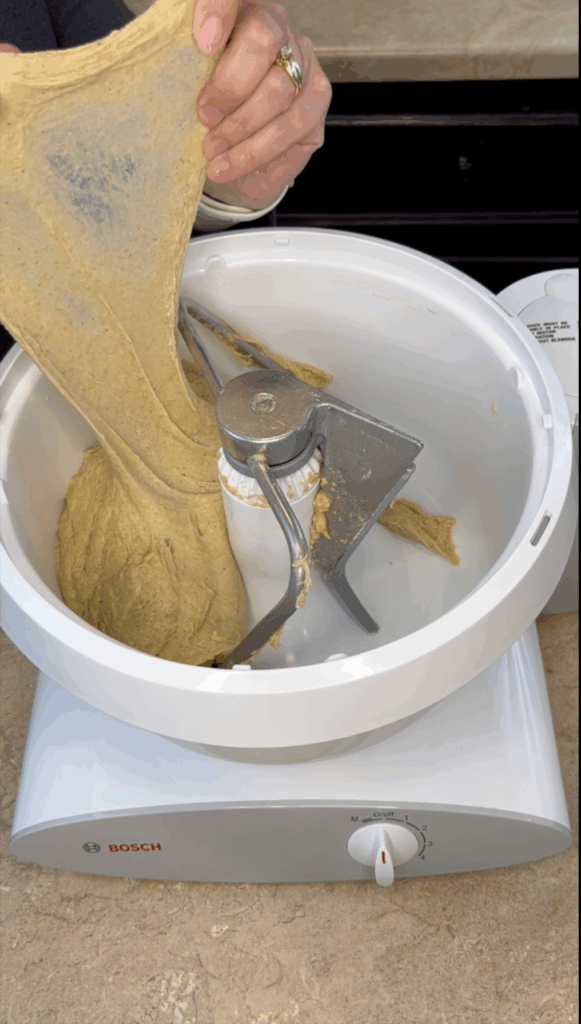
Step 4. Bulk Fermenting (Letting the yeast roll dough rise):
Next, lightly oil your proofing container to prevent sticking. A see through bowl with straight sides works best. Then, transfer your dough to the proofing container. Cover and let rest in a warm place until it increases by about 80%. The amount of time it takes for your proofing depends on the starting temperature of your dough. Additionally, the temperature and moisture of your environment. Generally, it takes about 30 minutes to 1 hour at room temperature (70-75°F) to reach an 80% increase in bulk. I would recommend setting an alarm and checking on it every 30 minutes. This will allow you to gauge how fast your dough is rising.
Bread is greatly dependent on the environment, and no two loaves will ever be the same. I live in an area that gets all 4 seasons. I get very different results in the winter than I do in the hot humid summers. Don’t over proof your dough at this point or it will cause the final product to be crumbly.

While you are waiting for your dough to ferment, prepare a 9×13 baking pan by generously greasing it with butter.
Step 5. Shaping:
1. If you are making the full 24 rolls, divide into 24 equal pieces. If you are only making 12 rolls, cut dough in half, then take half the dough and divide into 12 equal pieces. You can shape the other half of the dough into my soft sandwich bread or one of my other basic dough recipes.
Tip:
To ensure the rolls are the same size it’s best practice to weigh the dough. Then, divide by 24. That’s the amount each individual dough ball will need to be for shaping.
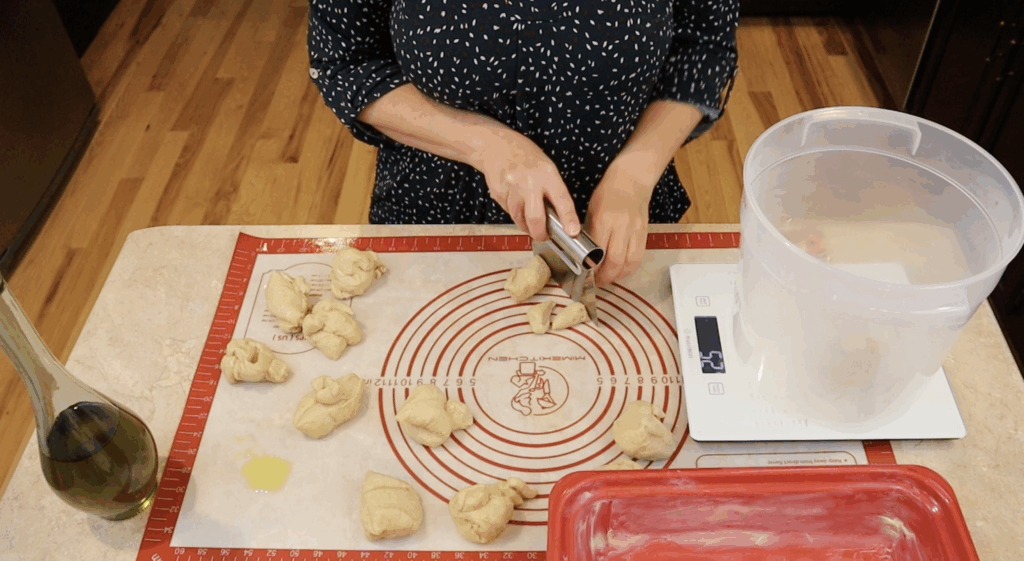
2. After you have equal size portions; you need to shape individual dough and create surface tension. Creating the appropriate amount of surface tension is very important for a soft dinner roll that holds together well. To properly shape the yeast roll you take the dough into your hand. Push the dough up into the middle from underneath. At the same time, use your other hand to pull the dough down the sides creating tension in the process. Then, pinch the dough together on the bottom. Next, drag the dough along our work surface with tension to complete the shaping of the fresh milled flour yeast roll. See my video for a visual on how this looks.
3. After you have shaped the yeast roll, place in a greased 9×13 pan. A cast iron skillet is another great option for baking rolls in.
Step 6. Proofing:
Now that all the yeast rolls are shaped, cover and let them sit in a warm place until doubled in size. This can take approximately 1-2 hours depending on your environment. Toward the end of the proofing time, preheat the oven to 350°F.
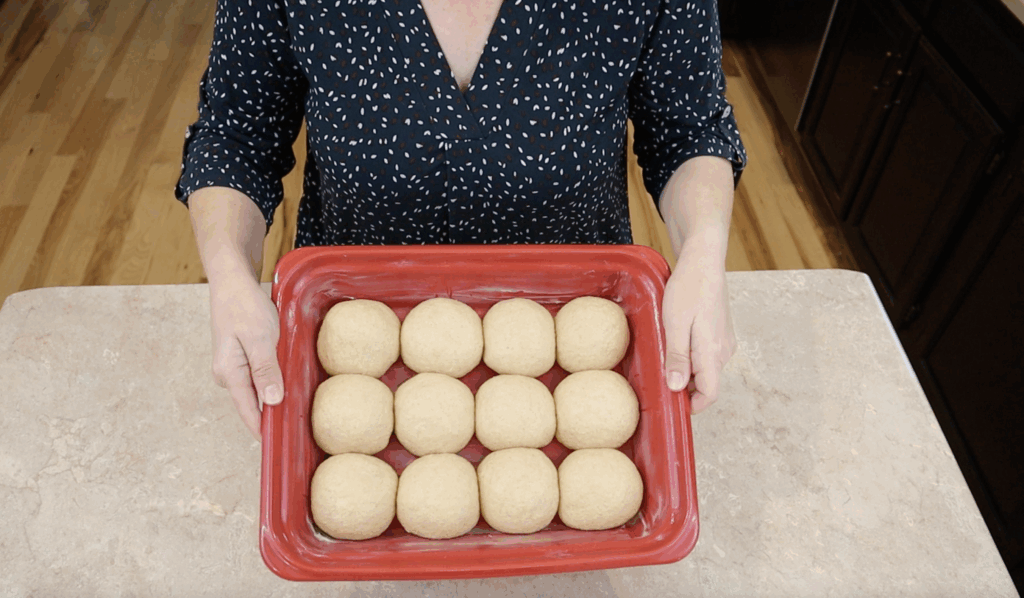
Step 7. Baking:
Next, place the pan of fresh milled flour yeast rolls into a preheated oven and bake at 350°F for 25 minutes. The internal temperature of a fully baked roll should be at least 195°F.
While the rolls are still warm out of the oven, brush butter on the tops of the rolls.
With these soft yeast rolls made from fresh milled flour, you’ll bring warmth and comfort to any meal. Whether you serve them fresh or freeze for later, homemade bread has never been so rewarding. Enjoy every bite!
Shop This Post:
*This post contains affiliate links. As an Amazon Associate, I earn from qualifying purchases. If you click and make a purchase, I may earn a small commission at no extra cost to you. Rest assured, I only recommend products I have personally used and genuinely love, so you’re in good hands.
NutriMill Harvest Grain Mill (use code GRANDMA 20 to get $20 off any NutriMill Flagship product including grain mills, Bosch Mixers, Artiste, and Magimix)
Brod & Taylor Precision Kitchen & Coffee Scale with Timer | (0.1g Precision)
Creative Co-Op Black & White Marble Salt & Pepper Pots with Wood Lids (Set of 2 Styles)
Silicone Baking Mat, Non Stick Pastry Mat Sheet for Dough Rolling, Nonslip Fondant/Pie Crust Mat, Counter Mat Oven Liner Mat for Making Cookies Macarons Bread Baking Supplies Extra Large 26 x 16 Inch
Ergo Spout mason jar traditional styled spout with ergonomic handle for syrup, dressing, gravy, sauce – nonsealing flip top cover (REGULAR MOUTH, Vintage Blue – Teal)
TableCraft H931 Siena 16 Oz. Green Tint Glass Oil Bottle
Hasense Porcelain Butter Dish with Lid, Covered Butter Container with Handle Design for Countertop, Blue
Saf Instant Yeast, 1 Pound Pouch
CAMBRO RFS6PP190 Camwear 6-Quart Round Food Storage Container with Lid
Canning Jars – Transparent Glass Eco-Friendly Jars with Air Tight Seal – 1.5 Liter Tall Jars – Set of 2
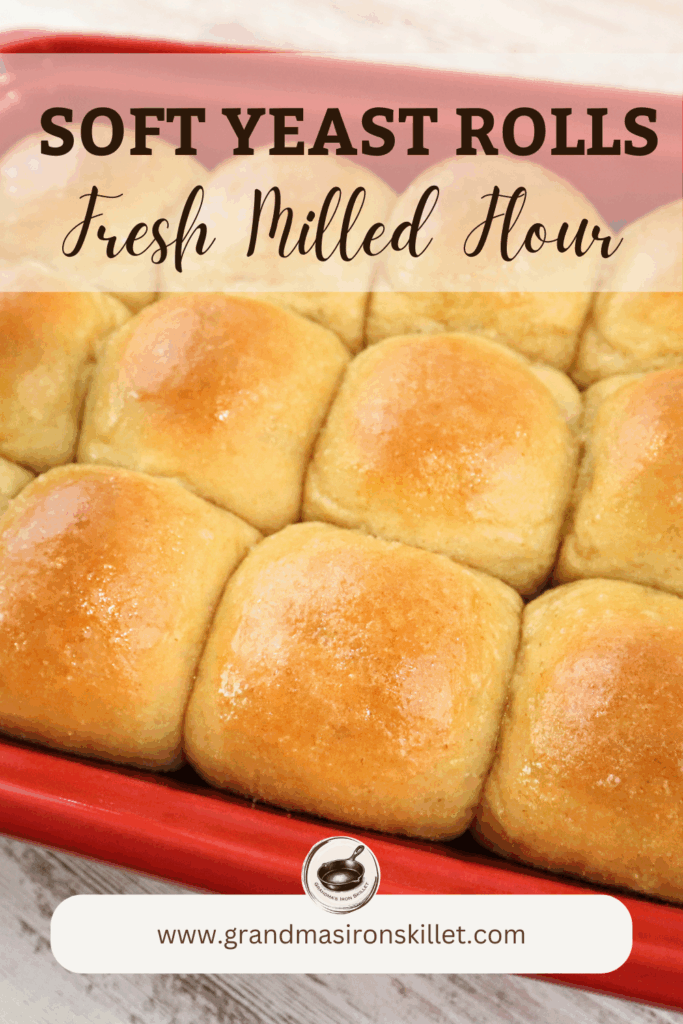
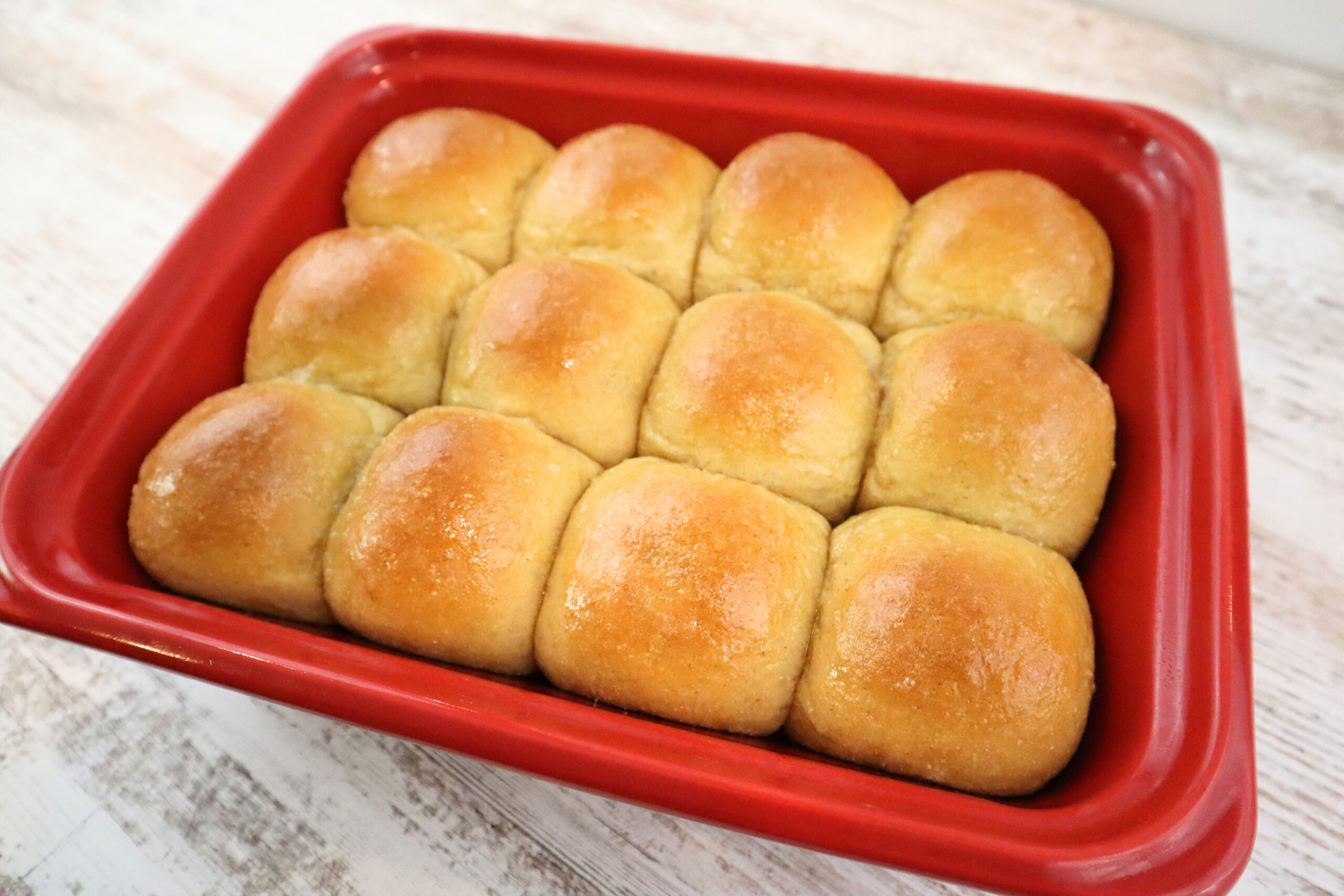
Yeast Rolls Made with Fresh Milled Flour
Ingredients
Method
- First, you will want to measure 660 grams of wheat berries. For this recipe I like to use 473 grams of hard white and 187 grams of Khorasan. If you don’t have Khorasan, you can use all hard white. Hard red wheat berries are another great option.
- Next, you will mill the wheat berries through your grain mill on a fine setting. I have a NutriMill Harvest so I can get a full 660 grams of flour one-for-one out of my grain mill. If you have trouble getting all the flour to move through your mill you may need to weigh out one or two grams extra of wheat berries to account for any loss you may experience in the milling process. Once you have the flour freshly milled, add salt and dry milk powder to the flour and gently mix with a spoon. Then set aside.
- Tip: If you don’t have milk powder, you may omit it, but you will need to substitute the water for milk.
- After that, measure 418 grams of water and warm until it’s approximately 95° F to 105°F. Then, Add water, olive oil, honey, and room temperature egg to a stand mixer. Mix the liquid ingredients. Start out at a low speed and then slowly increase the speed to medium until all the wet ingredients are well mixed.
- Next, gradually add the freshly milled flour mixture. Mix on a low to medium speed just until all the flour is no longer dry.
- Cover and let rest for 1 hour.
- After the dough has autolyzed for one hour, add staf-instant yeast. Then, knead in your stand mixer until you have reached a windowpane. Trust the process and DO NOT add any extra flour at this point. The kneading process will be done when you reach the windowpane stage.
- Lightly oil your proofing container to prevent sticking. Then, transfer your dough to the proofing container. Cover and let rest in a warm place until it increases by about 80%. Generally, it takes about 30 minutes to 1 hour at room temperature (70-75°F) to reach an 80% increase in bulk.
- While you are waiting for your dough to ferment, prepare a 9×13 baking pan by generously greasing it with butter.
- If you are making the full 24 rolls, divide into 24 equal pieces. If you are only making 12 rolls, cut dough in half, then take half the dough and divide into 12 equal pieces. You can shape the other half of the dough into my soft sandwich bread or one of my other basic dough recipes.
- After you have equal size portions; shape individual dough balls and create surface tension.
- Next, place in a greased 9×13 pan.
- Cover and let them sit in a warm place until doubled in size. This can take approximately 1-2 hours depending on your environment. Toward the end of the proofing time, preheat the oven to 350°F.
- Next, place the pan of fresh milled flour yeast rolls into a preheated oven and bake at 350°F for 25 minutes. The internal temperature should be at least 195°F.
- While the rolls are still warm out of the oven, brush butter on the tops of the rolls.
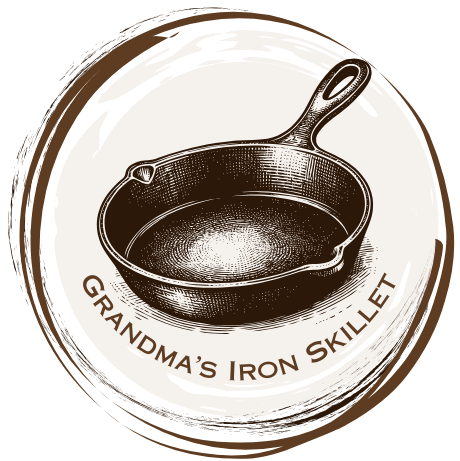
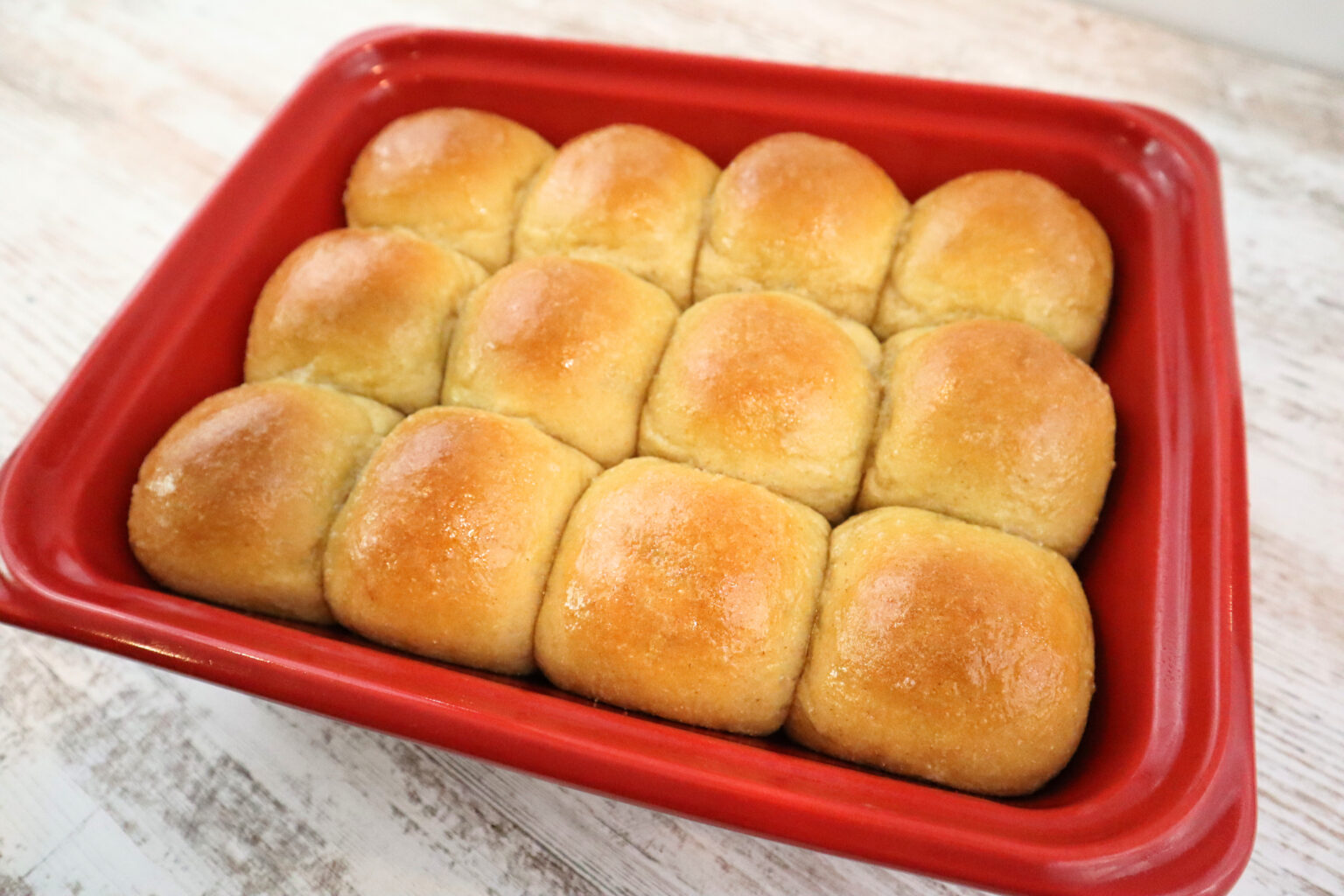
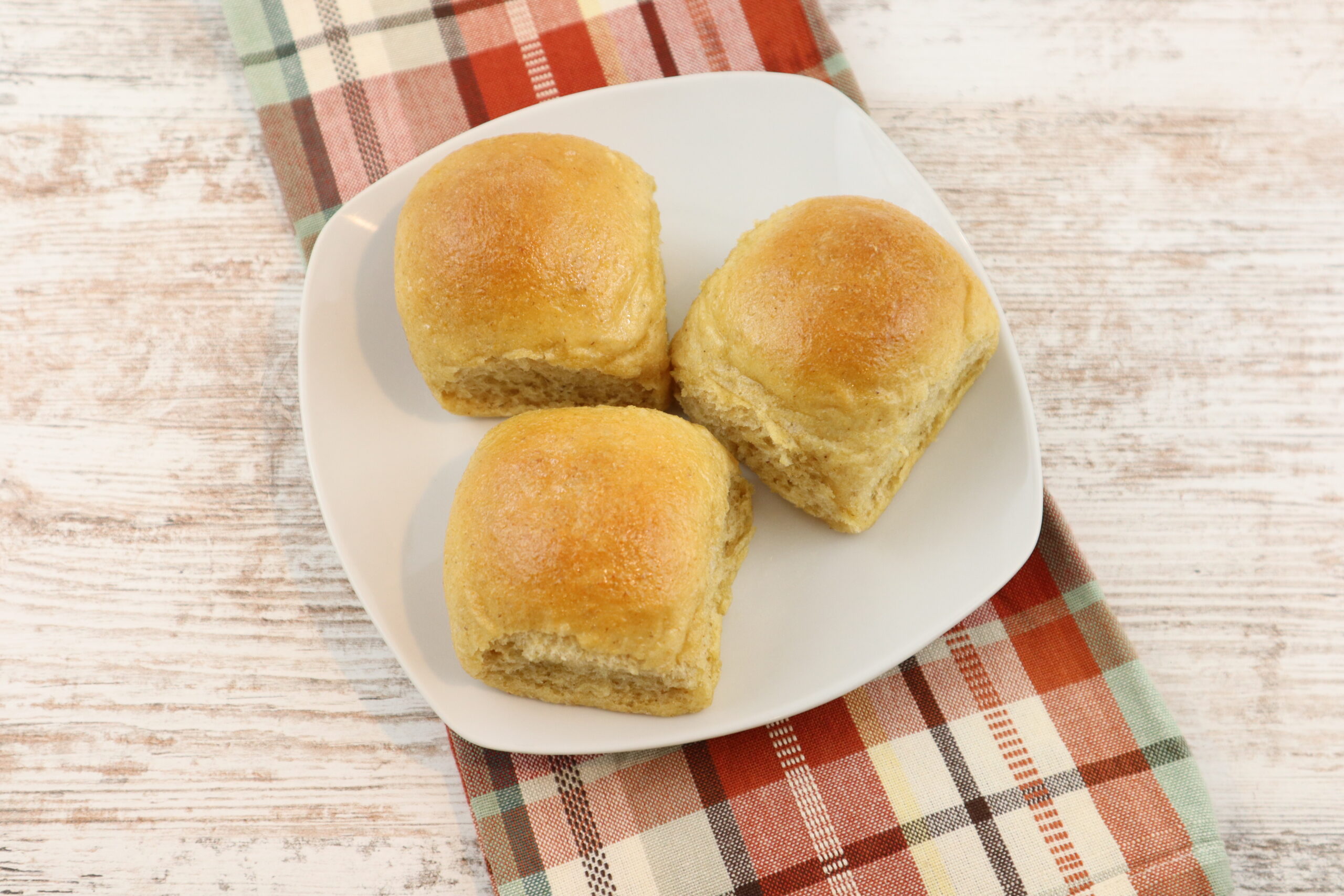


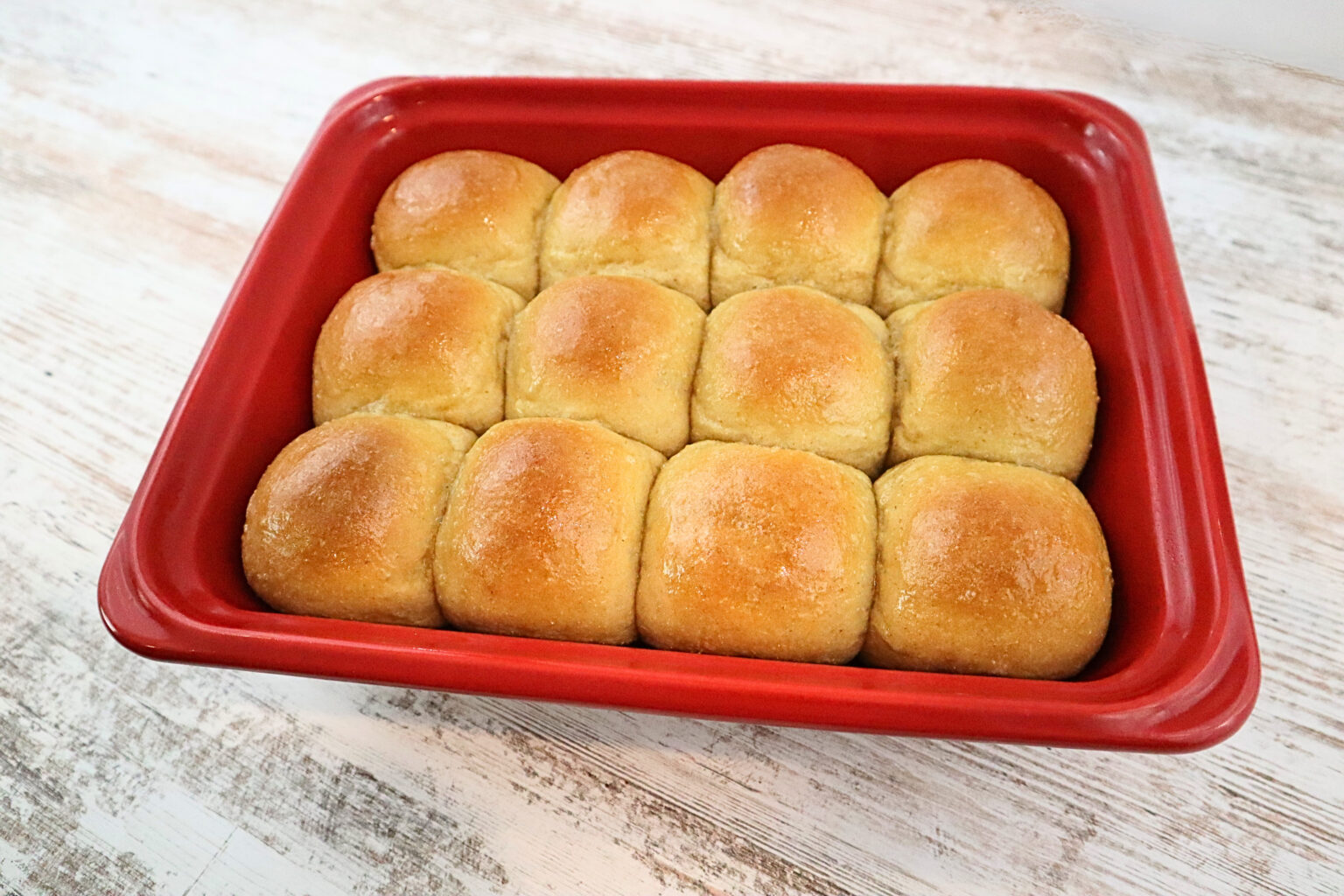
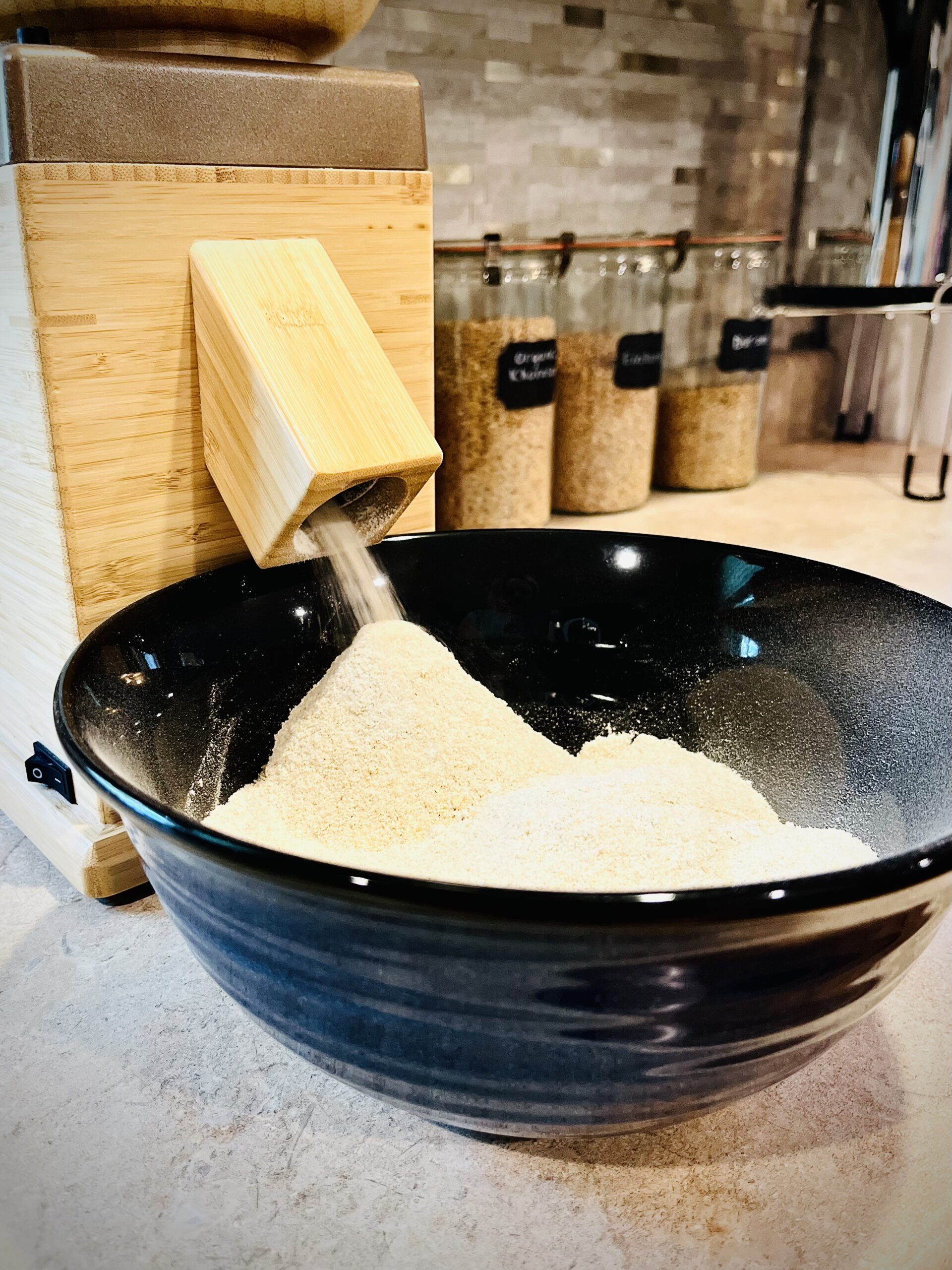
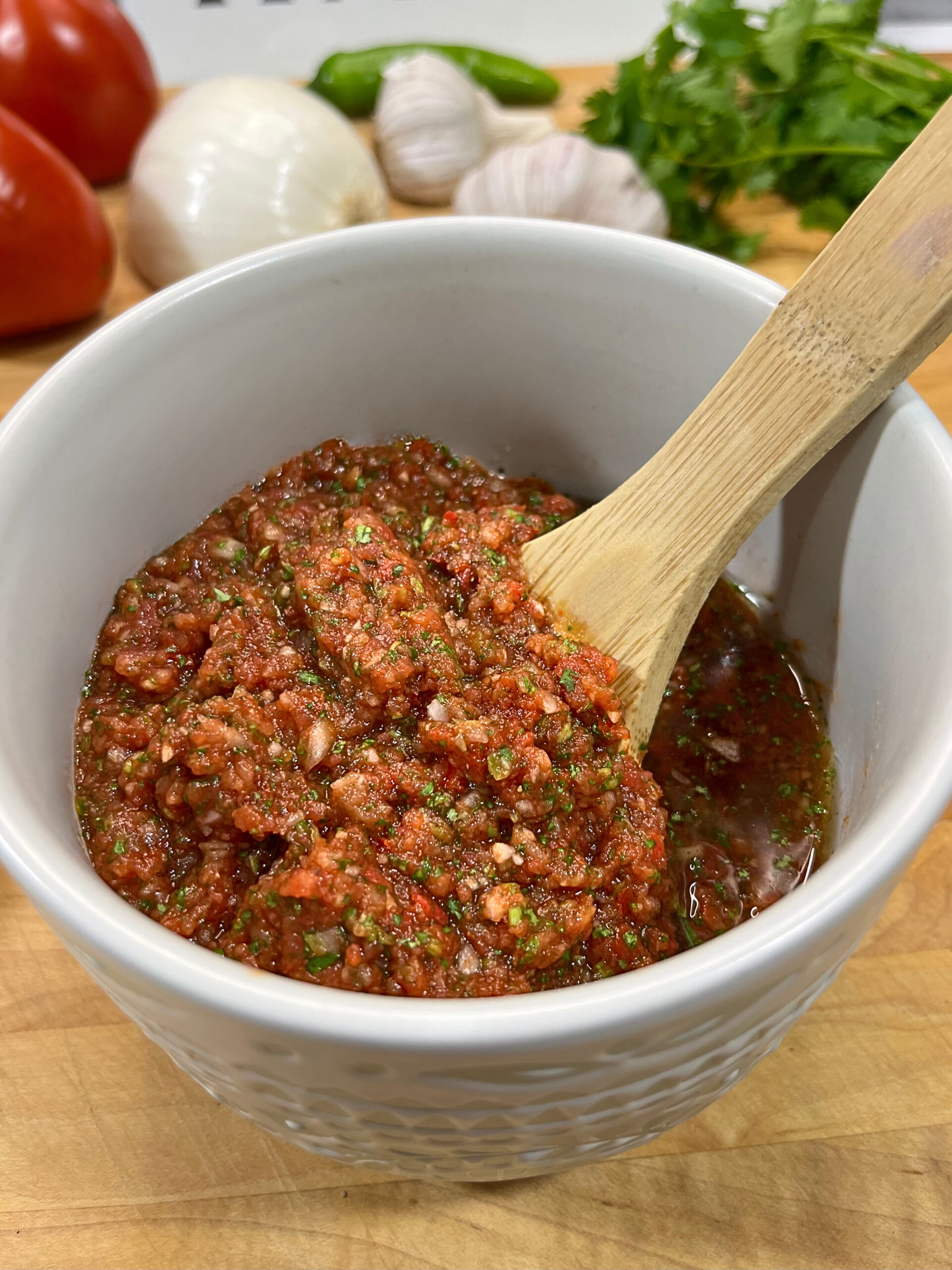
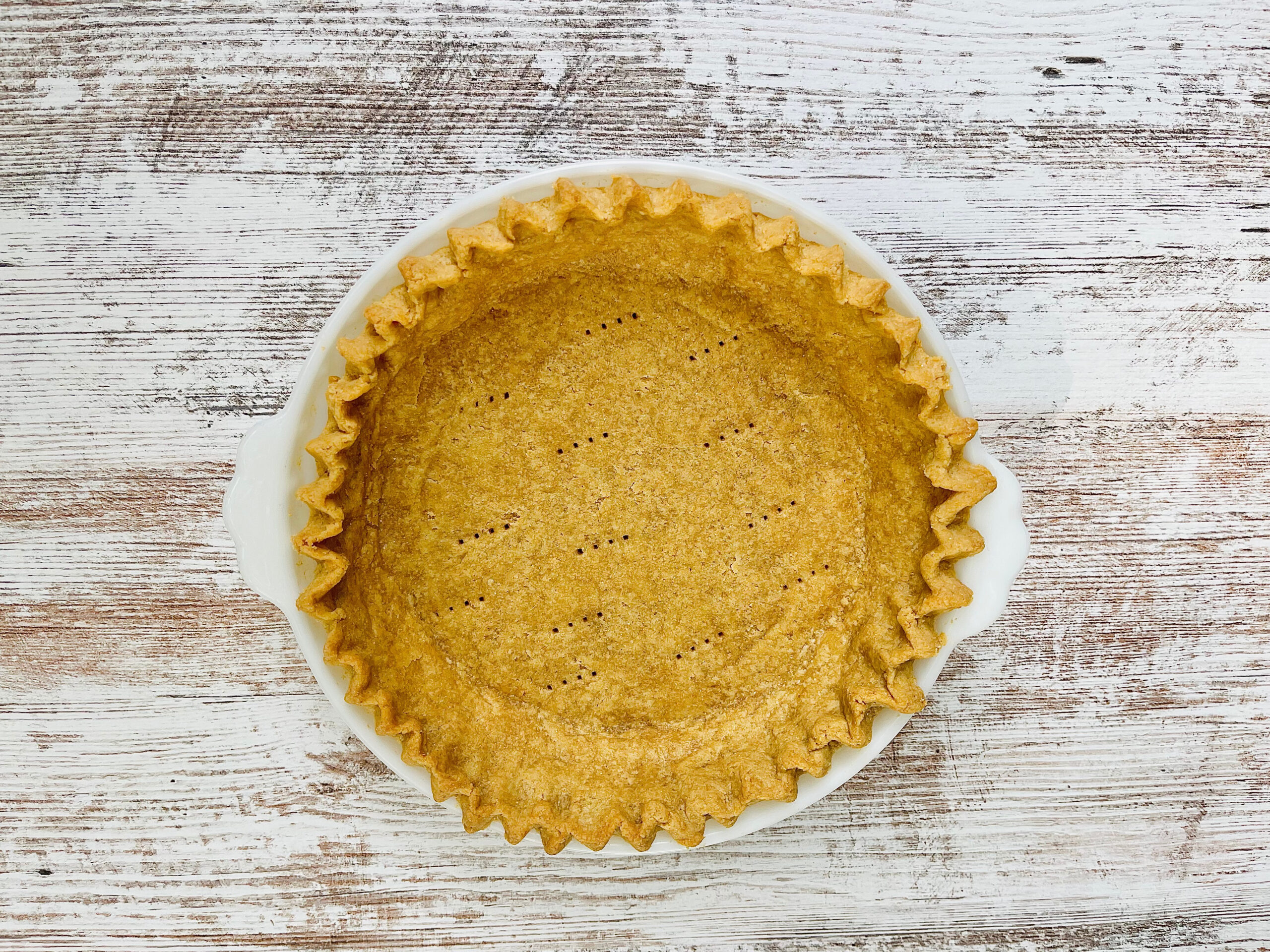
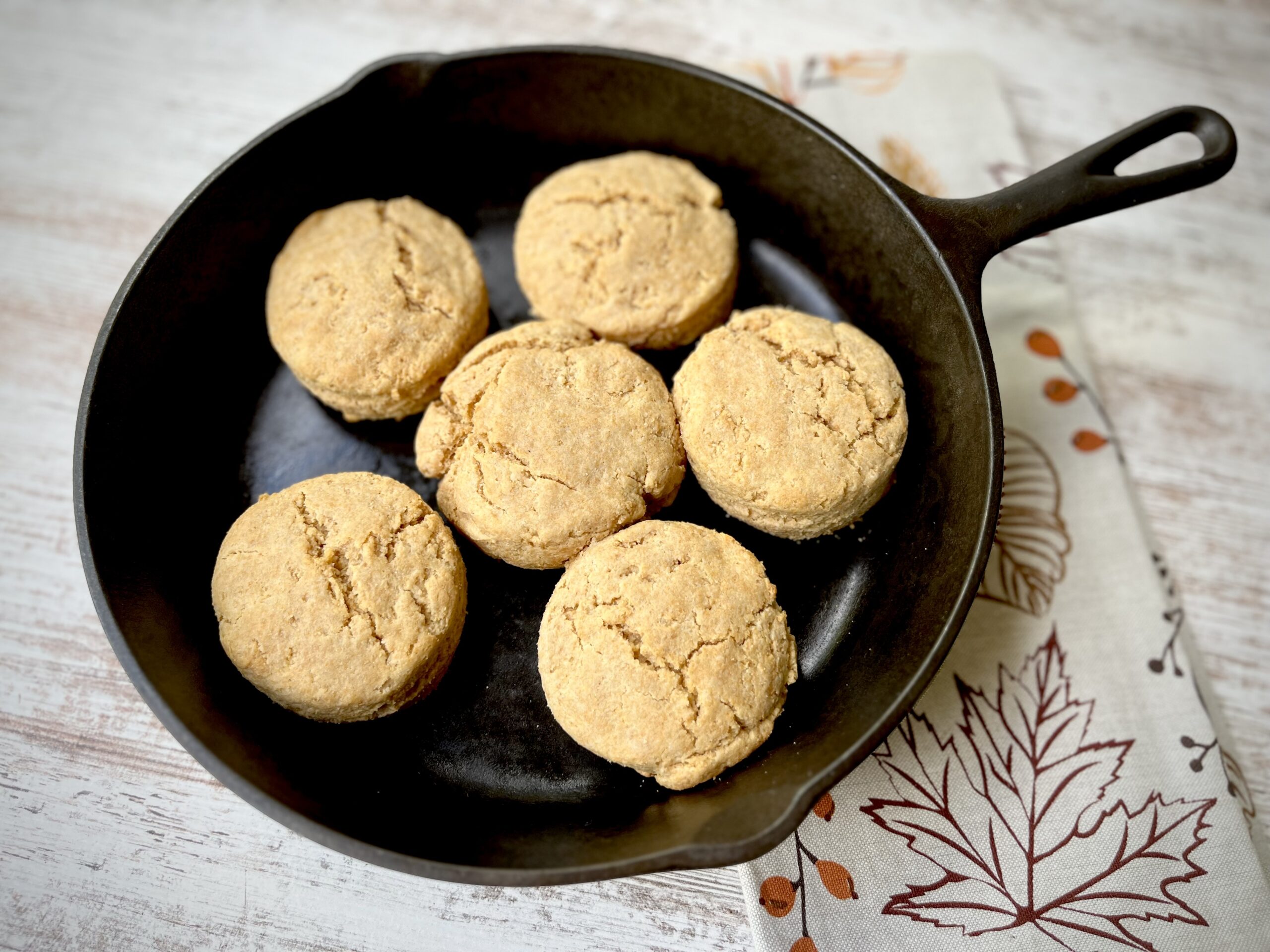
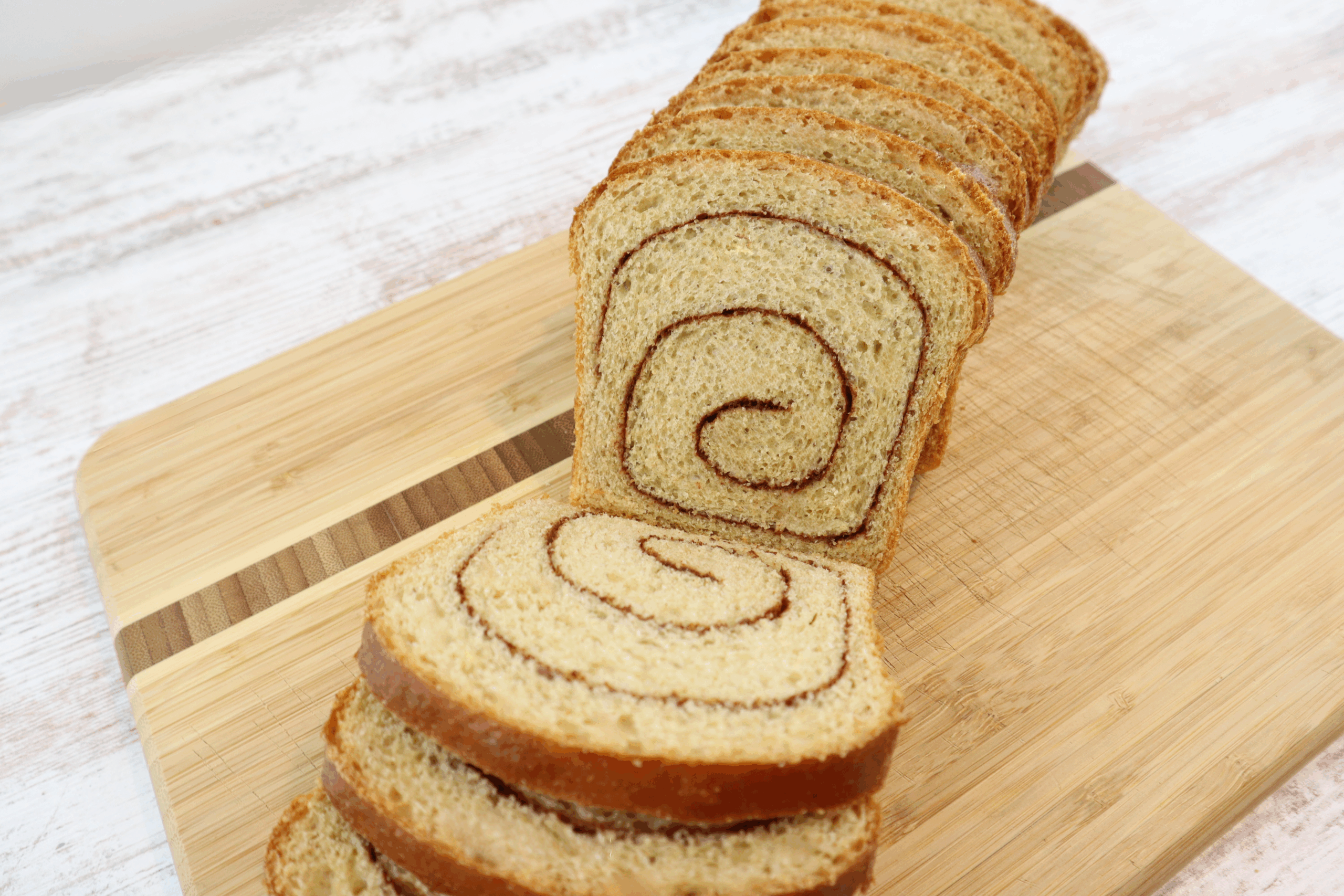
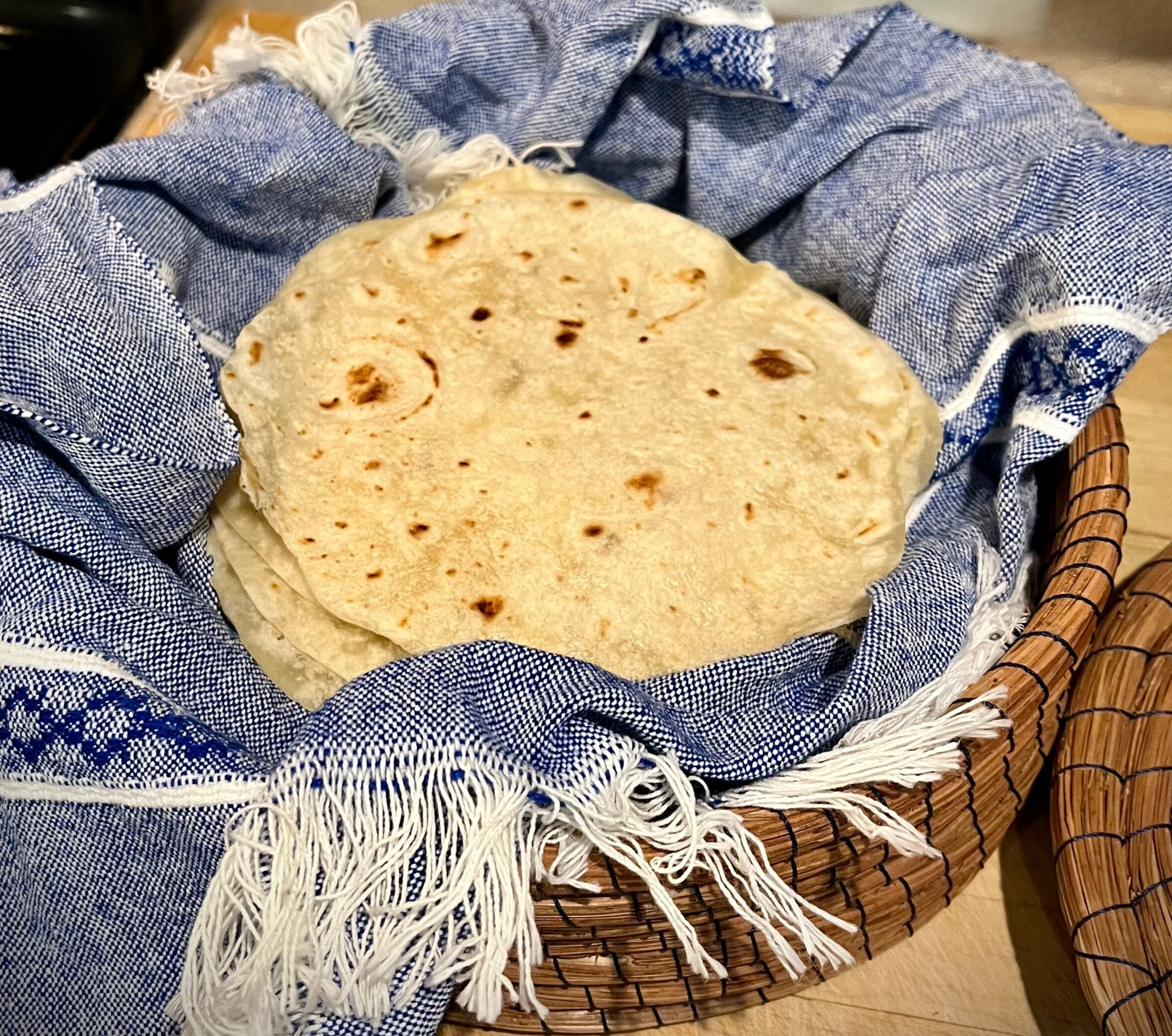
These were so delicious and easy to make! Thank you for the recipe!
Thanks for adding details about freezing. I didn’t want to cut the recipe in half so this is the perfect solution.
These look so easy to make, and so delicious. Something new to try for the weekend!
Nice! Need to experiment. Thanks for sharing! .
These look fantastic!
These are so delicious! I think I will make them for the holidays!
These look amazing! I couldn’t agree more, a soft fluffy roll is a Midwestern staple. They always remind me of holidays back home in Indiana!
These were soft and delicious. I’m new to FMF and your directions are very clear. I do feel like my rolls fell a little while they baked, Can you tell me what I might have done wrong.
Hi Annette, It sounds like the dough might be slightly over-proofed. For best results, aim to let it rise to about 80% during bulk fermentation. After shaping, allow the dough to rise only until it has just doubled in size during the final proof. This should help maintain the right structure and texture.